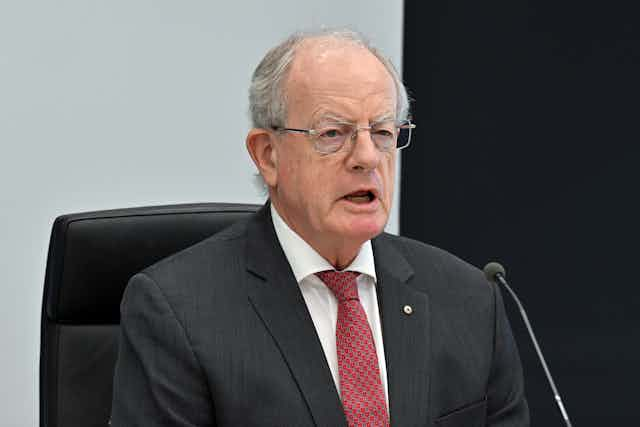The National Anti-Corruption Commission will provide guidance on “corruption vulnerabilities” ahead of next year’s federal election, NACC Commissioner Paul Brereton said on Thursday.
“The commission will produce guidance concerning corruption risks and vulnerabilities associated with issues such as grants, political donations and fundraising, foreign interference, government advertising and appointments,” Brereton said.
He told a conference on “Rebuilding trust and integrity in the Australian Public Service”, run by The Mandarin, that there was a vast difference in the integrity landscape now compared with when the first anti-corruption commission was set up – the ICAC in New South Wales – 35 years ago.
“Since then, there has been a sea change in the tolerance of the public, the press and the public service for corrupt conduct.”
Brereton said corruption was “about the misuse of public power, position, privilege or property” usually for private purposes. “It results in the diversion of public resources, and the undermining of trust in our public institutions. Although it is not the only form of corrupt conduct within the definition, breach of public trust lies at its core.”
Brereton stressed that “mere mistakes, incorrect decisions, and even negligent maladministration, are not in themselves corrupt conduct”. Generally, there must be an element of dishonesty and/or personal benefit.
Up to February 18 the commission had received 2,534 referrals of suspected corrupt conduct, overwhelmingly voluntary referrals from the public. Nearly 80% were excluded because they didn’t involve a Commonwealth official or didn’t raise a corruption issue.
The commission had opened 18 preliminary investigations, of which five had been finished, in each case with a finding of no corruption.
It had opened 13 corruption investigations, four of them jointly with other agencies, and had referred five corruption issues to other agencies for investigation.
In 220 cases which passed triage, the commission had decided to take no more action.
“Typically, this is because there are insufficient prospects of finding corrupt conduct, or the matter is already being adequately investigated by another agency, or a corruption investigation would not add value in the public interest.”
The commission also progressed seven investigations that were started by the former Australian Commission for Law Enforcement Integrity.
Brereton said the statistics showed “that the public perception of corruption greatly exceeds the actuality”.
But this wasn’t a reason to be complacent “first, because the perception bespeaks a lack of trust and confidence in our institutions, and secondly, because there is still an actuality that underlies it”.
He said in the public service there were two main areas where there was the perception and actuality of corrupt conduct – procurement, and recruitment and promotion.
“Concerns in both those areas relate to the preferring of family, friends and associates, and misuse of official information to gain an advantage.”
While many complaints about selection and promotion reflected grievances by disappointed applicants, not all could be dismissed on these grounds. In procurement, mere compliance with the rules didn’t mean the conduct was ethical. “In particular, contracts for a value just under the threshold for a limited tender process tend to be a red flag.”

